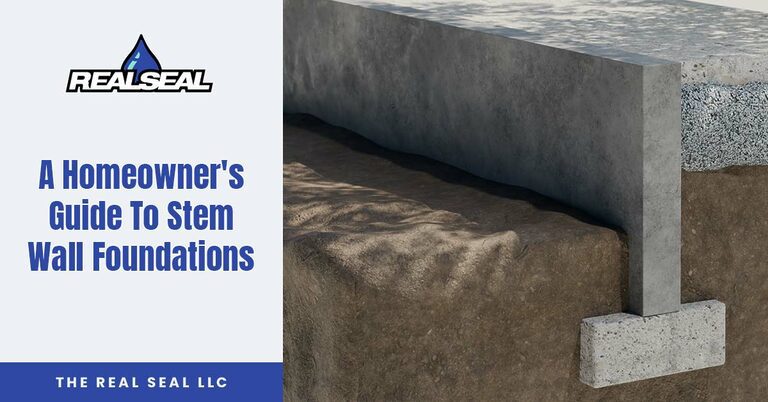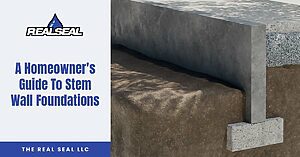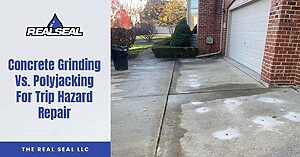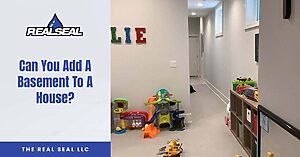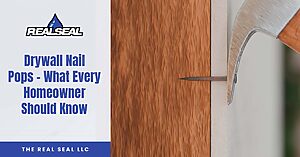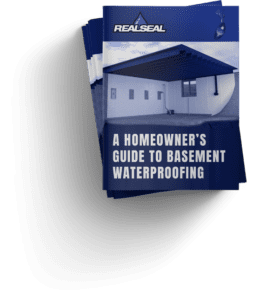Are you considering a new construction project or perhaps dealing with foundation issues? Understanding stem wall foundations can be a game-changer for homeowners. In this comprehensive guide, we’ll explore what stem walls are, how they’re constructed, their benefits and drawbacks, how they compare to other foundation types, common problems and repairs, and how to maintain them.
What Is A Stem Wall?
A stem wall is a common foundation used for residential and commercial buildings. It consists of concrete footings installed below the ground and a vertical wall extending from the foundation slab to the floor level. This wall acts as the backbone of the building, providing essential structural support. Stem walls are admired for their resilience and ability to suit various building projects, particularly in regions prone to heavy rainfall or flooding.
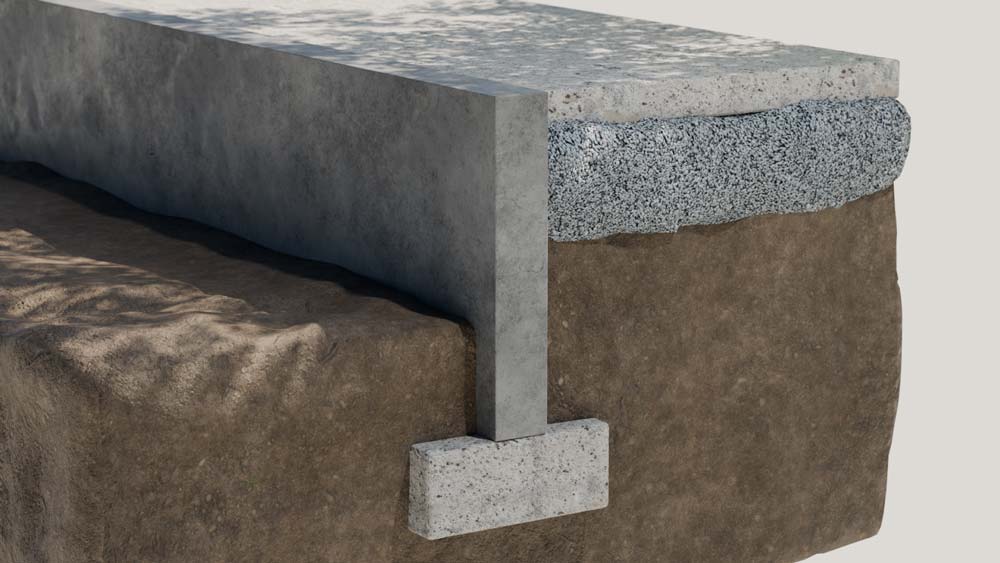
How Is A Stem Wall Constructed?
First, a trench is dug around the perimeter of the home. This trench is filled with concrete to form the footer. Next, masonry blocks or poured concrete form the vertical wall, which is reinforced with rebar for added stability. Finally, the void that will become the floor of the building is filled with sediment and compacted, and the stem wall is capped with a concrete slab, creating a robust and durable foundation.
Pros And Cons Of Stem Wall Foundations
Like any construction method, stem wall foundations come with their own set of advantages and disadvantages.
Pros:
- Elevated Structure: Elevating the home above the ground significantly reduces the risk of flooding. This is beneficial in areas prone to heavy rainfall or with a high water table. This elevation also helps reduce the effects of pests and moisture, creating a healthier living environment.
- Durability: This foundation provides strong structural support, ensuring stability and safety. It can withstand heavy loads, making it ideal for larger buildings or structures that require additional support due to weight.
- Versatility: This foundation type is adaptable to various soil conditions, making it suitable for multiple terrains. Whether the soil is sandy, rocky, or clay-based, the foundation can be tailored to fit the site’s specific needs. Additionally, it accommodates different architectural styles and building designs, offering flexibility in construction.
Cons:
- Cost: Constructing this type of foundation is generally more expensive than other foundation types. The higher price is due to the need for more materials and the complexity of the construction process. Building a stem wall might require a more significant initial investment, which could be a deterrent for some homeowners or builders.
- Complexity: The construction process is more intricate, involving multiple steps and a higher level of precision. This complexity requires skilled labor and specialized equipment, leading to longer construction times. As a result, projects might face delays and increased labor costs.
- Maintenance: Over time, the foundation may develop cracks or other structural issues, requiring regular inspection and repair. These maintenance requirements can add to the long-term costs and effort needed to keep the foundation in good condition. Regular upkeep is essential to prevent minor issues from becoming major problems, ensuring the longevity and safety of the structure.
What Is The Difference Between A Stem Wall And A Monolithic Slab?
Understanding the differences between stem wall foundations and monolithic slabs can help you make an informed decision for your home.
Monolithic Slab:
- Constructed in a single pour of concrete.
- Less expensive and quicker to build.
- Suitable for flat, stable soil conditions.
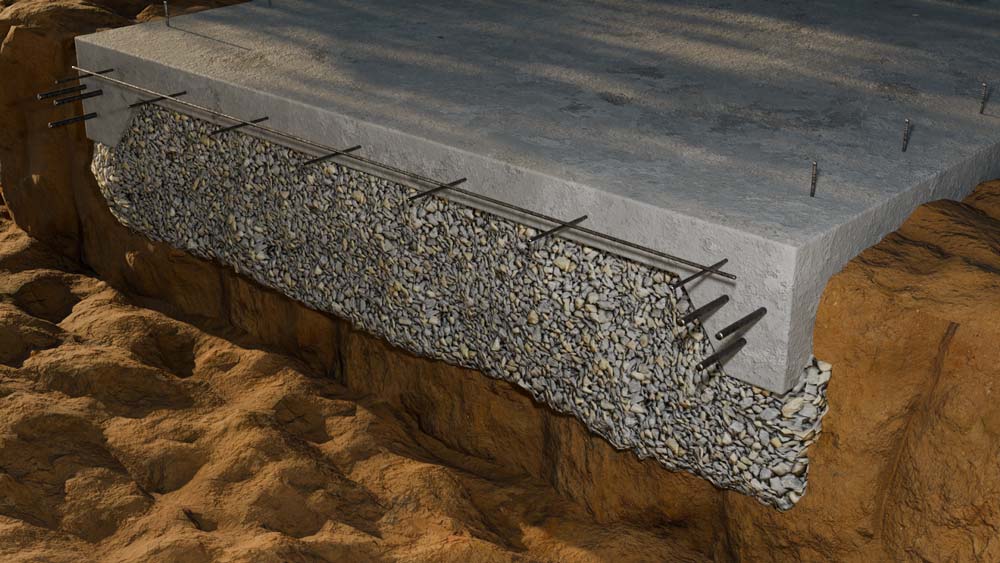
Is A Stem Wall Better Than A Slab?
The answer depends on your specific needs. Stem walls offer better protection against flooding and provide a more stable base for homes built on uneven terrain. However, monolithic slabs are often more cost-effective and quicker to install.
What Is The Difference Between A Stem Wall And A Crawl Space?
Stem walls and crawl spaces elevate the home above the ground but serve different purposes.
Crawl Space:
- Provides access to plumbing, electrical, HVAC systems, and additional storage space.
- Often less expensive and more straightforward to build.
- Requires regular maintenance to prevent pest infestations and moisture issues.
Is A Stem Wall Better Than A Crawl Space?
Stem walls offer a more solid foundation and better protection against flooding. However, crawl spaces provide easier access to utilities and are usually cheaper to construct. Your choice will depend on your priorities and local building codes.
Common Stem Wall Problems And Repairs
Even the most well-constructed stem walls can encounter issues over time. Note some of the most common problems and how to repair them:
Cracks
Cracks can occur for various reasons, including soil movement, temperature fluctuations, and water damage. Hairline cracks are often superficial and don’t pose significant structural risks; larger cracks can compromise the foundation’s integrity.
Causes Of Cracks:
- Soil Expansion and Contraction: Fluctuating moisture levels cause soil to expand or contract, pressuring the stem wall.
- Temperature Changes: Freeze-thaw cycles stress the concrete.
- Poor Construction Practices: Improperly mixed concrete or inadequate curing weakens areas prone to cracking.
- Water Damage: Excess moisture or poor drainage around the foundation leads to cracks over time.
Repair Methods:
- Epoxy Injection: Fills small cracks, restoring structural integrity.
- Underpinning: Extends foundation depth or breadth to stable soil using push or helical piers for severe cracks or shifts.
- Replacing Affected Sections: Corrects severely damaged sections to ensure foundation security.
Spalling
Spalling refers to the flaking or chipping off of the concrete surface, often resulting in a rough, uneven texture. This issue can compromise the stem wall’s structural integrity and aesthetic appeal.
Causes Of Spalling:
- Freeze-thaw cycles: Water seeps into cracks and expands when frozen, breaking the surface.
- Poor Quality Concrete: Improper mix ratios or inadequate curing lead to weaker concrete and surface failure.
- Corrosion of Reinforcement: Corroding rebar causes expanding rust, leading to spalling.
- Mechanical Damage: Heavy impacts or wear and tear.
Repair Methods:
- Surface Patching: Clean and apply a concrete patch to small areas.
- Overlaying/Replacement: Add a new concrete layer or replace extensively spalled areas.
- Proper Drainage: Improve drainage to reduce water infiltration and freeze-thaw damage.
Differential Settlement
Differential settlement refers to the uneven sinking or settling of a foundation, which can lead to structural imbalances and potential damage to the building.
Causes Of Differential Settlement:
- Variable Soil Conditions: Differences in soil composition, such as clay and sand pockets, lead to uneven support and settling.
- Poor Compaction: Inadequate soil compaction creates voids or weak spots that settle differently under the building’s weight.
- Moisture Variations: Uneven moisture levels from leaking pipes or heavy rain cause differential pressure and settlement.
Repair Methods:
- Soil Stabilization: Techniques like polyjacking stabilize weak or variable soil and lift sinking sections of the foundation.
- Underpinning: Extending the foundation to stable soil using helical or push piers stabilizes the foundation and prevents future settlement.
- Regrading and Drainage Control: Improving drainage and regrading land around the foundation controls moisture levels.
How To Maintain A Stem Wall Foundation
Maintaining your stem wall foundation is essential for ensuring its longevity and performance. Here are some tips:
- Regular Inspections: Conduct periodic checks for cracks, spalling, and signs of water damage. If you notice any signs of damage, call a professional for an in-depth inspection.
- Proper Drainage: Ensure good drainage around your home to prevent water from pooling near the foundation.
By keeping up with these maintenance tasks, you can significantly extend the life of your stem wall foundation and avoid costly repairs.
Suspect Foundation Damage?
If you suspect any issues with your stem wall foundation, don’t hesitate to schedule a professional inspection and get a repair estimate. Your home’s foundation is too important to leave to chance. If you live in the Chicagoland area, contact us today to book your free inspection and repair estimate to ensure your home stands strong for years.
